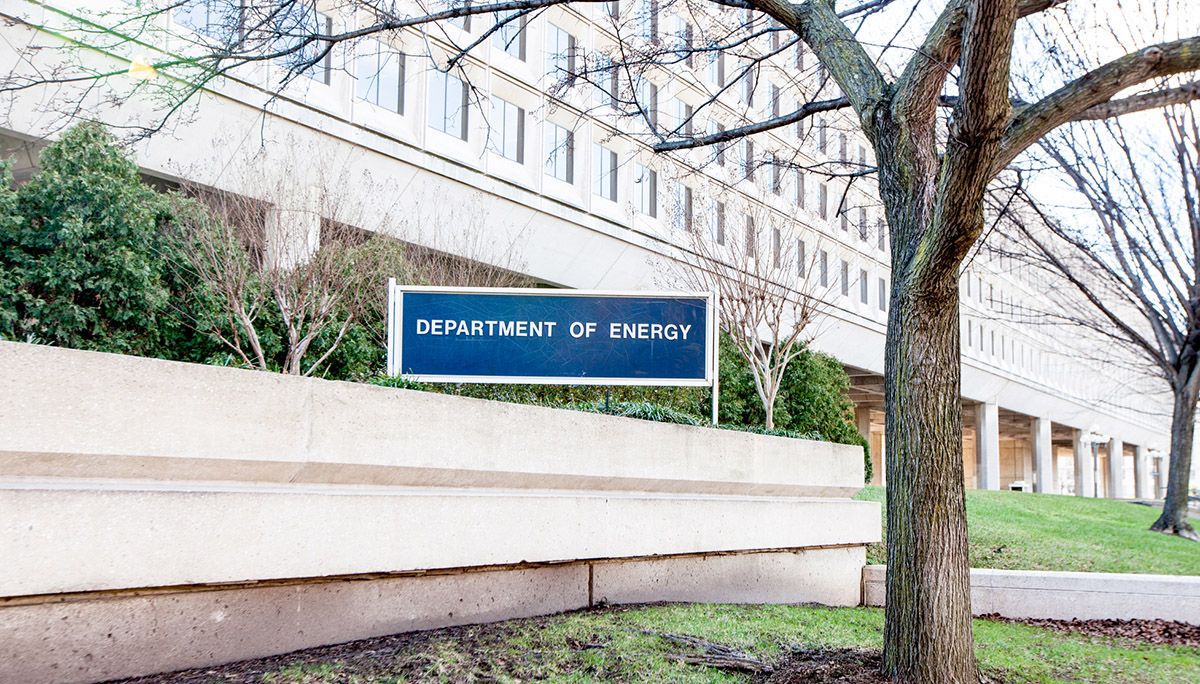
Despite Four Decades and $500 Billion, the Energy Department Hasn't Accomplished Much
Four decades ago, the movie Star Wars was released and the first Apple II computer went on sale. That same year, 1977, newly-inaugurated President Carter established the U.S. Department of Energy (DOE) in an attempt to launch a government-inspired tech revolution in energy.
The history of the computer-tech revolution is well storied. Far from exhibiting “irrational exuberance”—as infamously asserted by economist Alan Greenspan in 1996—tech entrepreneurs were not only quite rational, but from the ‘bottom up’ literally created an entirely new kind of infrastructure and permanently transformed society. Policies and institutions have been forced to embrace the implications or be assimilated.
Meanwhile, the history of a top-down policy attempt to effect an energy tech revolution is quite different. But start with the goals.
In April 1977, still in the penumbra of the economic and geopolitical fallout from the 1973/74 Arab oil embargo, President Carter announced the creation of DOE in his “moral equivalent of war” address to the nation. Government action, he said, was needed for “the greatest challenge that our country will face during our lifetime” in order to “balance our demand for energy with our rapidly shrinking resources.” Carter added that if DOE failed “the alternative may be a national catastrophe.” That was quite a burden for one agency.
Give Carter credit for an enduring legacy in at least this regard: that speech’s “10 fundamental principles” have anchored all energy policies since. The first principle was “that we can have an effective and comprehensive energy policy only if the government takes responsibility for it and if the people understand the seriousness of the challenge.” And DOE’s 40-year mission? It has been almost entirely focused on reducing the use of, or trying to completely replace, oil and gas. That mission remains the same today, although the motives have changed.
After all these decades of government programs consuming some $500 billion in that pursuit, what’s happened?
America uses 140 percent more oil for transportation today than it did in 1977. Electricity consumption is up 200 percent. (The recent slow growth in power demand looks a lot like a recession effect: we’ll soon know for sure when the economy fully recovers.) Lavishly subsidized biofuels have grown from an irrelevant 0.25 percent in 1977 to an unremarkable 5 percent share of transportation energy use today. Solar power rose from essentially zero, back then, to today’s irrelevant 0.15 percent share of U.S. energy. Wind power has been the biggest success: but even those heavily subsidized turbines now supply only 1.5 percent of America’s energy.
The fundamental energy sources available to power society have remained unchanged not just since 1977 but since 1957. Politicians and pundits often intone that there are “a multitude” of new energy options, but that’s rhetorical hyperbole. There is no new physics in energy nor new energy sources, just better ways to use those that exist.
The most remarkable and unpredicted energy tech change didn’t come from DOE or the super-major oil companies. Thousands of small and midsized companies perfected new shale oil and gas technologies and transformed the landscape.
Shale tech has added 2,000 percent more to U.S. energy supply in the past decade than solar and wind combined. That’s the fastest and biggest addition to world energy supply — not just hydrocarbons, but all forms of energy — that has occurred in history. The only time something nearly as dramatic occurred was in the decade following the 1968 opening of Saudi Arabia’s giant Ghawar oil field. America is, after a 40-year hiatus, exporting crude oil again.
Despite these lessons from history, many policymakers continue to exhibit an “irrational exuberance” in their aspirational goals to replace oil and gas. The rhetoric is as apocalyptic today as in 1977; this time because of worries about global warming. But for the physics of energy, that’s a distinction without a difference. And the reality is that now, with the maturation of cloud and sensor tech, the digital revolution will advance oil and gas at a rate faster than it will alternative energy tech.
There is one other transformation since 1977. America is now far more dependent on electricity. Back then, electricity accounted for 39 percent of all nontransportation energy use. Today that share has risen to 55 percent. This has happened in large measure because of a new trillion-dollar computing and communications infrastructure, one that requires a uniquely reliable and always-on electric grid.
There is a real risk now in pursuing policies to save energy and push alternatives onto the grid that make it less reliable and in particular easier to hack. For a lesson in the risks, consider the 1977 New York City blackout that lasted 25 hours and led to rampant looting and disorder.
And the overall policy lessons on this 40th anniversary? Energy revolutions don’t emerge from top-down manifestos. Of course, new science will emerge one day. But accelerating that day will only come from supporting basic research, not policies and subsidies focused on yesterday’s technologies.
This piece originally appeared in The Hill
______________________
Mark P. Mills is a senior fellow at the Manhattan Institute, a faculty fellow at Northwestern University’s McCormick School of Engineering, and author of Expanding America's Petroleum Power: Geopolitics in the Third Oil Era. Follow him on Twitter here.
This piece originally appeared in The Hill